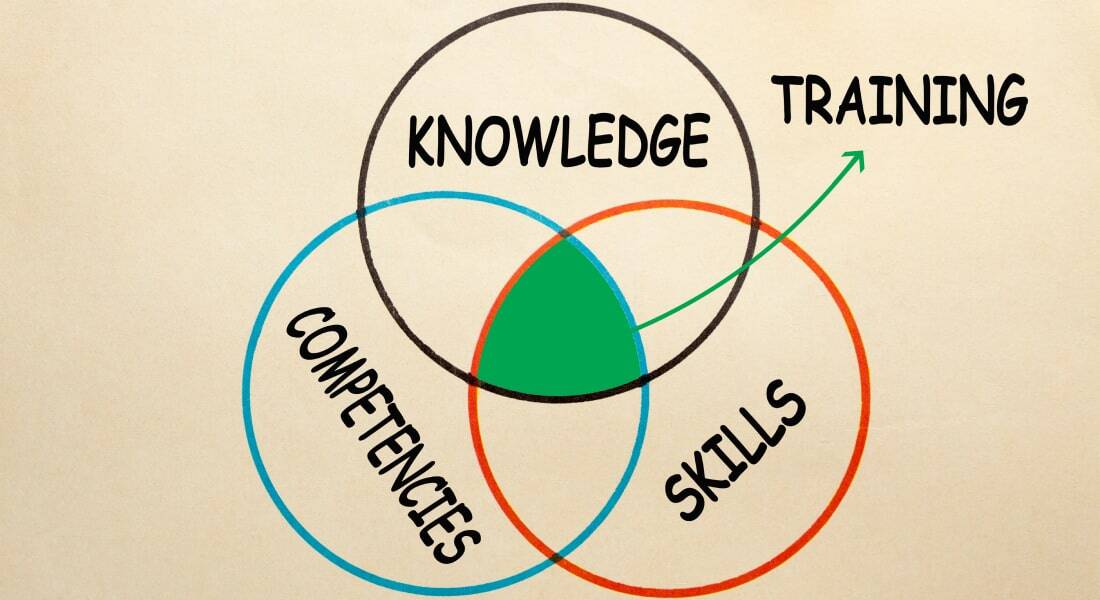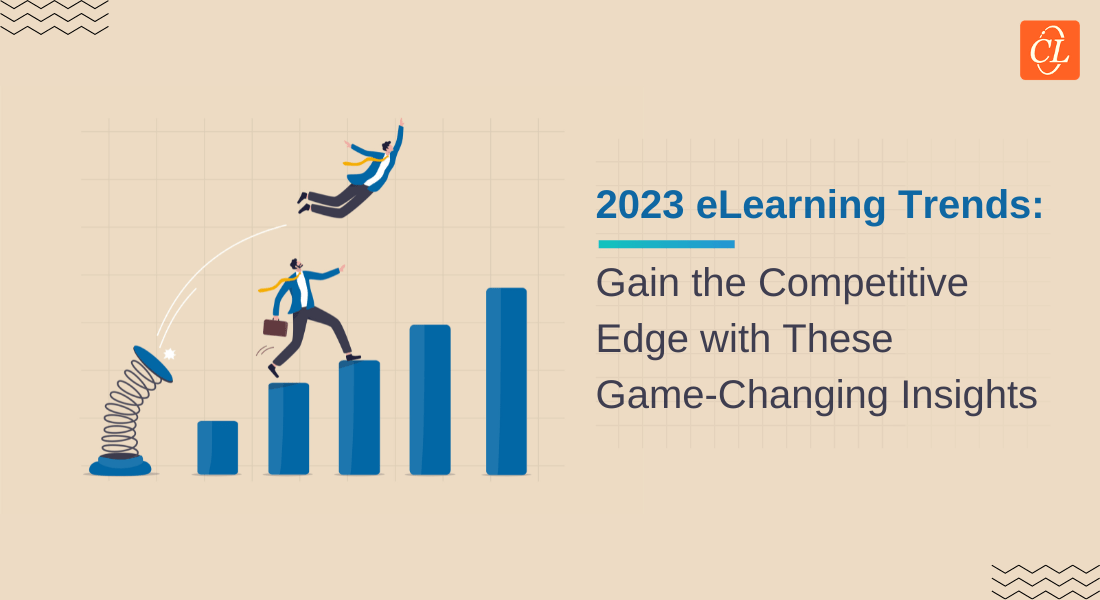7 Tips to Build Impactful Competency-based Training

Feeling the pressure to keep your team on top of their game in this ever-changing business world? We've all been there. The skills needed for success seem to change faster than ever, leaving many organizations with a growing skills gap. But fear not! There's a training hero ready to swoop in and save the day: Competency-Based Training (CBT).
What is Competency-Based Training?
Competency-Based Training (CBT) flips traditional corporate training on its head. Instead of focusing on time spent learning, CBT prioritizes mastery of essential skills for specific job roles. This translates to several benefits:
- Boosts Performance: Employees equipped with the right skills can tackle their jobs more effectively, leading to improved results.
- Sharpens Skillsets: CBT targets specific skill gaps, ensuring employees develop the most relevant capabilities for their roles.
- Enhances Engagement: Interactive and practical learning keeps employees motivated and improves information retention.
Forget the tired lectures and forgettable facts of traditional training. CBT is all about real-world mastery. It focuses on developing the specific skills your employees truly need to excel, not just filling their heads with random knowledge.
This blog dives into seven key tips to build powerful CBT programs. Imagine a team brimming with practical skills and a competitive edge – that's the future CBT can create for you! Ready to transform your corporate training and leave the skills gap behind? Let's get started!
7 Tips to Build Impactful Competency-based Training
1. Understanding Competency-based Training: Focus on Mastery
CBT is a strategic training approach that prioritizes learning outcomes over clocking training hours. It identifies the core competencies – the essential skills, knowledge, and behaviors – needed for successful performance in a specific job role.
This learner-centered approach prioritizes personalized learning, tailoring instruction to address specific skills gaps and learning styles.
How to Create Personalized Learning Experiences with ChatGPT? [Video]
2. Identifying Key Competencies: Collaboration is Key
Developing effective CBT begins with identifying the essential competencies for each job role within your organization. Collaboration is key here. Partner with subject matter experts (SMEs) – individuals with deep knowledge and experience in the specific roles – to identify the critical skills and knowledge employees need to excel.
Beyond core skills, consider incorporating industry-specific competencies and aligning training with your organization's strategic goals. This ensures your training program equips employees for not only current tasks but also future challenges and evolving industry trends.

3. Crafting Clear Learning Outcomes: Defining the "What" and "Why"
Once you've identified key competencies, the next step is crafting clear and measurable learning outcomes. These outcomes define the specific knowledge and skills learners will acquire by the training's end. They answer the questions: "What will learners be able to do?" and "How will they be able to demonstrate their mastery?"
Well-defined learning objectives are crucial for several reasons. They provide a roadmap for developing training content, allow for effective assessment strategies, and ensure alignment between the training program and your organizational objectives. Think of them as the guiding light that steers your training program towards achieving its desired outcomes.
→ Download Now: Strategies to Train a Hybrid Workforce [eBook]
4. Designing Engaging Learning Experiences: Beyond Lectures
CBT goes beyond traditional lecture-based formats. Effective competency-based online training utilizes a variety of instructional methods to cater to diverse learning styles and enhance engagement. Here are some options to consider:
- Interactive eLearning modules: Engaging modules with multimedia elements, simulations, and scenarios can transform learning into a dynamic experience.
- Generative AI: Utilize the power of AI to personalize learning paths and generate relevant content based on individual needs.
- Scenario-based learning: Present learners with realistic workplace scenarios where they can apply newly acquired skills and make informed decisions.
- Mentorship programs: Pair learners with experienced mentors who can provide personalized guidance and support skill development.
Interactivities like quizzes, polls, and drag-and-drop exercises are excellent tools to keep learners engaged and actively participate in the learning process. Storytelling techniques can also be powerful tools, weaving narratives that connect learners to the content on a deeper level and make learning more memorable.
5. Assessing Learner Performance: Measuring Mastery
Assessing learner performance is critical in CBT. It allows you to gauge whether learners have mastered the identified competencies and are prepared to apply them effectively. Utilize a blend of formative and summative assessments throughout the training program:
- Formative assessments: These ongoing assessments provide feedback throughout the learning journey, allowing for adjustments and personalized support. Examples include quizzes interspersed within modules or quick knowledge checks.
- Summative assessments: These final assessments measure mastery at the end of a module or training program. Consider practical demonstrations, projects requiring application of learned skills, or performance evaluations conducted on the job.
Agile assessment techniques like performance-based tasks and scenario-based simulations offer a more realistic evaluation of competency mastery compared to traditional multiple-choice tests. Incorporating a variety of question formats caters to diverse learning styles and ensures a comprehensive assessment.
6. Personalized Learning Paths: Tailored Learning for Individual Needs
Personalized learning is a cornerstone of effective CBT. Organizations can cater to individual needs by tailoring learning paths based on existing skills and knowledge gaps identified through assessments. Learners can leverage microlearning modules – bite-sized bursts of focused content – to address specific skill gaps efficiently. This allows them to progress at their own pace, focusing on areas requiring additional reinforcement while moving swiftly through topics they already grasp.
eLearning development tools can be leveraged to create personalized learning journeys. These tools can track learner progress, recommend relevant modules based on individual needs, and provide targeted feedback to support skill development.

7. Gamification and Responsive Design: Engaging Learners Anytime, Anywhere
Gamification – the integration of game-like elements into non-game contexts – can significantly enhance learner engagement and motivation. Consider incorporating points, badges, leaderboards, and healthy competition into your CBT program. These elements can transform learning from a chore into a rewarding and engaging experience.
Responsive eLearning design ensures your training program is accessible and mobile-friendly. In today's fast-paced world, learners often access training materials on the go. Responsive design allows your training program to seamlessly adapt to different screen sizes, from desktops to tablets and smartphones, making learning accessible anytime, anywhere. Mobile learning empowers employees to learn and develop new skills during commutes, breaks, or even while traveling, maximizing flexibility and efficiency.
Conclusion: Building a Skilled Workforce for the Future
Competency-based training offers a powerful approach to developing a skilled and adaptable workforce. By focusing on mastery of essential competencies, CBT equips employees with the practical skills required for success in today's ever-evolving business landscape. The tips explored in this blog provide a roadmap for organizations looking to embrace CBT and cultivate a thriving learning culture.
But wait, there's more! Our free eBook, "Strategies to Train a Hybrid Workforce", dives deeper into training for hybrid teams. Download it to learn innovative approaches and empower your workforce for success!





![9 Ways eLearning Works Better than Classroom Training [Infographic]](https://blog.commlabindia.com/hubfs/Imported_Blog_Media/positives-of-online-training-infographic.jpg)